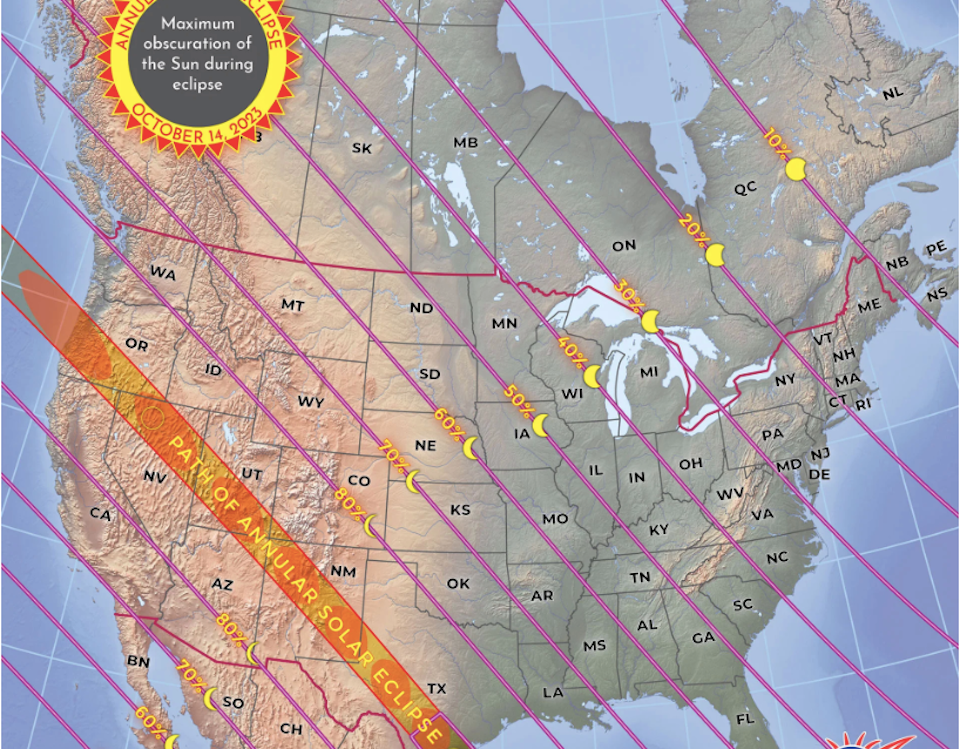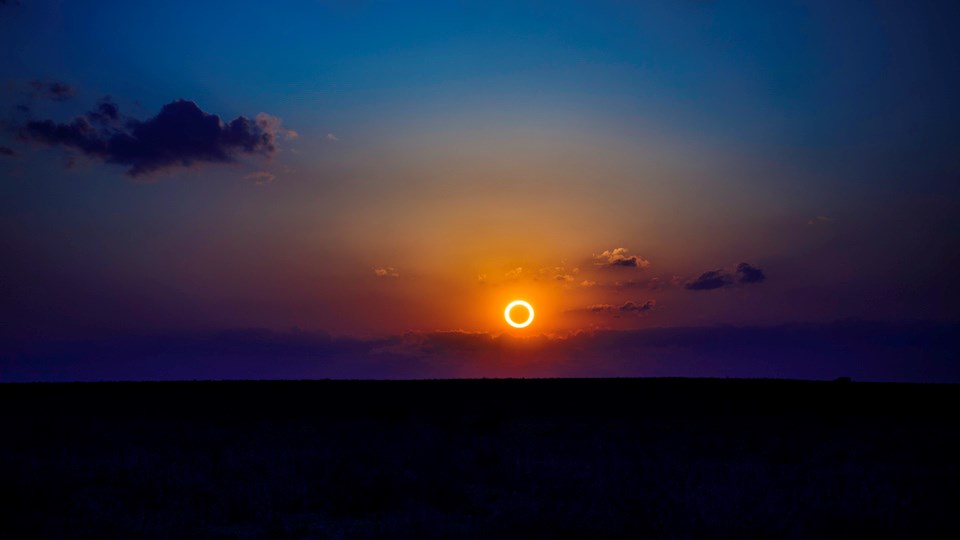An awe-inspiring display will make the sun appear like a ring of fire with a black disk in front of it across the Americas this fall.
An annular solar eclipse will take place on Oct. 14 as the moon moves between the sun and Earth and the display will be visible in parts of the United States, Mexico, and many countries in South and Central America, according to NASA.
While millions of people will be able to observe the solar eclipse, they won't all see the same display. People who live in the direct path of the astral event will see it reach its fullest, diamond-ring effect, while other areas will see only a percentage of it.
The eclipse is considered "annular" because the moon will be at its farthest point from Earth, making it appear smaller than the sun. Since the moon is farther away, it won't completely block the light from the bright star.
NASA's map shows that Metro Vancouverites should observe roughly 70 to 80 per cent of the eclipse, while people residing in the B.C. Interior or near the Alberta border should see approximately 60 to 70 per cent of it.

Locals will see the beginning of the partial solar eclipse at 8:08 a.m. and then observe it reach its maximum at 9:20 a.m. It will end at 10:38 a.m., according to timeanddate.com.
Vancouver weather and solar eclipse viewing opportunities
Based on weather records since 2000, Oct. 14 has been "cloudy" 70 per cent of the time. However, NASA notes that even with cloud cover you can still notice the change, as the sky darkens dramatically.
To find out what to expect on the big day this year, check out the Metro Vancouver weather forecast for your specific neighbourhood with V.I.A.'s Weathhood. Forecasts are available for up to seven days in advance via Weatherhood.
Even though the sun will be mostly dark, it is not safe to look directly at it during an annular eclipse. Use specialized eye protection for solar viewing if you want to see the sky show in all its celestial glory.
The sun may still be very bright during the partial phases before and after the annular eclipse. Wear sunscreen, a hat, and protective eye wear.
Will binoculars or a telescope protect my eyes from damage?
The bright sun will "instantly cause severe eye injury" if you observe it through a "camera lens, binoculars, or a telescope without a special-purpose solar filter secured over the front of the optics," according to NASA.
Regular glasses or sunglasses will not protect your eyes from sun damage. Use solar viewing glasses (eclipse glasses) or a safe handheld solar viewer. NASA notes that "safe solar viewers are thousands of times darker and must comply with the ISO 12312-2 international standard."
Before you use your special eclipse glasses or a handheld viewer, inspect them for tears, scratches, or damage. Throw them away if they have been damaged. Supervise children who are using them to view the eclipse.
The full moon in October, commonly known as the full "hunter" moon, will rise in Metro Vancouver roughly a week after the annular solar eclipse, on Oct. 28. It will also coincide with a partial lunar eclipse.



